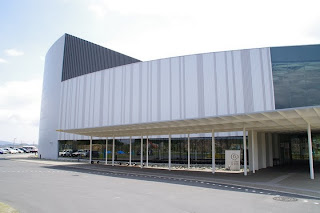Team building or bonding is critical in this kind of volunteer work. We have never met each other, but are supposed to function as a professional medical team right away. We do not have the luxury of having much time for team building retreats or exercises. We need to get to work immediately and perform our tasks as a team.
I am participating in this medical relief operation as a Project HOPE registered physician. Project HOPE (http://www.projecthope.org/where-we-work/humanitarian-missions/japan.html) is a healthcare NPO that provides medical care to disaster areas globally. It started the service in 1958, initially by operating a volunteer hospital ship (SS HOPE). After the Tohoku earthquake, Project HOPE’s hospital ship (now it is a part of the US Navy) arrived at the disaster area and offered its service. The local government requested medical staff to be fluent in Japanese so that he/she can easily communicate with the Tsunami victims as well as with local healthcare personnel. At about the same time, the Japan Primary Care Association started the program called “Primary Care for All Team” or PCAT. As you may have heard in various news media, international disaster medical relief teams (Disaster Medical Assistant Team or DMAT) have arrived to Japan to assist in providing acute and life-saving medical care immediately after the earthquake. However, these teams left the area within a week or two. The PCAT provides primary care to the disaster area communities on a longer term basis until an access to local healthcare resumes. Project HOPE and PCAT decided to join their medical relief efforts.
Both Project HOPE and PCAT recruit MDs, RNs and other healthcare personnel. Project HOPE requires volunteers to be able to participate in an 18 day rotation (door-to-door) which is 14 days of service and 4 days of traveling. Another requirement is fluency in Japanese, though a Japanese medical or nursing license is not required as long as he/she has a US license.
In my rotation (ROT #5), there are 3 MDs (including me) and 3 RNs from Project HOPE. I am from San Diego, 2 other physicians are from Los Angeles, and one nurse each is from Seattle, Maryland and Pennsylvania. We are all Japanese nationals living in the US. PCAT has also recruited additional MDs, RNs, pharmacists and midwives. They came from various parts of Japan and usually stay in Ishinomaki for a week or less. It is challenging to recruit medical staff in Japan for over a week of volunteer assignment since it is extremely hard to take many days off from their regular job. In providing chronic care at a shelter like Yugakukan, it is highly desirable to have some level of continuity. Project HOPE volunteers provide some continuity by being there for 2 weeks.
As I wrote in my previous post, our day is rather reasonable, 8 am-6 pm, though nurses have night shifts and MDs are on call 24/7. After returning to our housing, which is 25-30 minutes’ drive from our volunteer sites (Yes, I am driving the opposite side of the road very carefully.), we are welcomed by gourmet dinner made by our wonderful housekeeper, Mrs. K. It is such an unexpected treat! She also cleans the housing and does laundry. PCAT program managers have taken great care of us volunteers as well.
There is no shower or bath in our housing: however, there is hot spa right next door.
Gourmet dinner, a hot spa, and beer/sake, everyone sleeping in a huge Tatami mat room and NO TV…
Team building is instant!
 |
| Lobby of our housing |
 |
| Kitchen/dining hall/lounge/study hall |
 |
| Bonding essential #1: Good food |
 |
| Bonding essential #2:Good Sake |
 |
| Bonding essential #3: Hot spa |
 |
| Bonding essential #4: One Big bedroom |
 |
| Bonding accomplished! |












